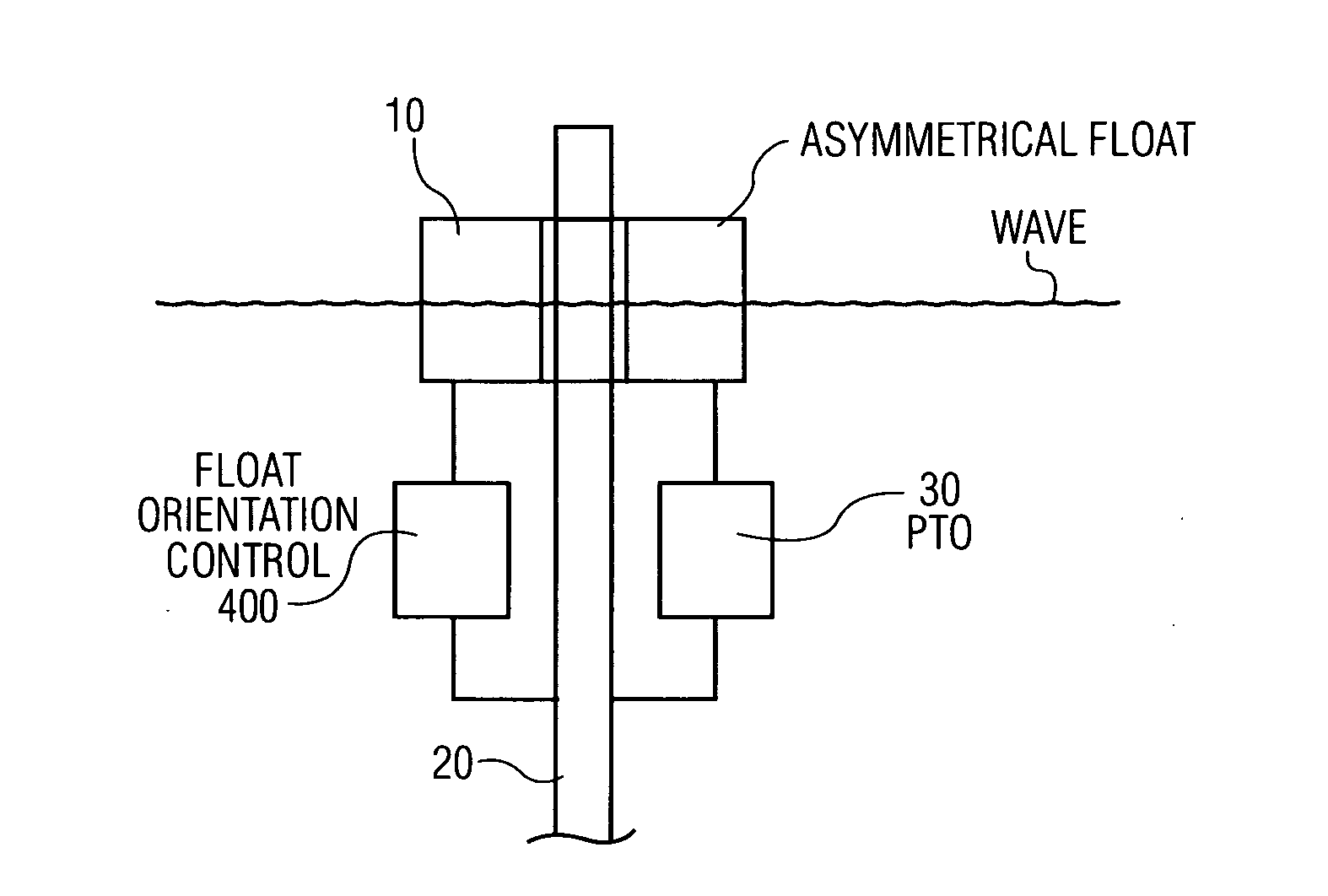Wave energy converter with asymmetrical float
a technology of asymmetrical float and wave energy, which is applied in the direction of sea energy generation, control system purpose, machines/engines, etc., can solve the problems of increased susceptibility to significant drawbacks of asymmetrical float use, and increased risk of being damaged under storm conditions, so as to increase the survivability of wec, reduce the application of excessive, potentially destructive, forces, and increase the effect of energy captur
- Summary
- Abstract
- Description
- Claims
- Application Information
AI Technical Summary
Benefits of technology
Problems solved by technology
Method used
Image
Examples
Embodiment Construction
[0035]FIG. 2 is a simplified cross sectional diagram illustrating that a WEC embodying the invention includes: (a) an asymmetrical float 10; (b) a spar 20; (c) a PTO 30 coupled between the float and the spar to convert their relative motion into useful energy (e.g., electric power); and (d) an apparatus 400 coupled to the float 10 for changing the orientation of and / or rotating the float 10 as a function of certain wave conditions and / or other selected conditions, such as, for example, maintenance.
[0036]The asymmetrical float 10 is normally oriented so its longer side faces the incoming waves when the wave amplitudes are within a “normal” range. For the condition where the direction of the incoming waves changes, the asymmetrical float 10 is rotated so its longer side keeps on facing the incoming waves, thus maintaining the improved energy capture. However, when the amplitudes of the waves exceed the “normal range”, the float is re-oriented so its narrower side faces the incoming wa...
PUM
 Login to View More
Login to View More Abstract
Description
Claims
Application Information
 Login to View More
Login to View More - R&D
- Intellectual Property
- Life Sciences
- Materials
- Tech Scout
- Unparalleled Data Quality
- Higher Quality Content
- 60% Fewer Hallucinations
Browse by: Latest US Patents, China's latest patents, Technical Efficacy Thesaurus, Application Domain, Technology Topic, Popular Technical Reports.
© 2025 PatSnap. All rights reserved.Legal|Privacy policy|Modern Slavery Act Transparency Statement|Sitemap|About US| Contact US: help@patsnap.com



